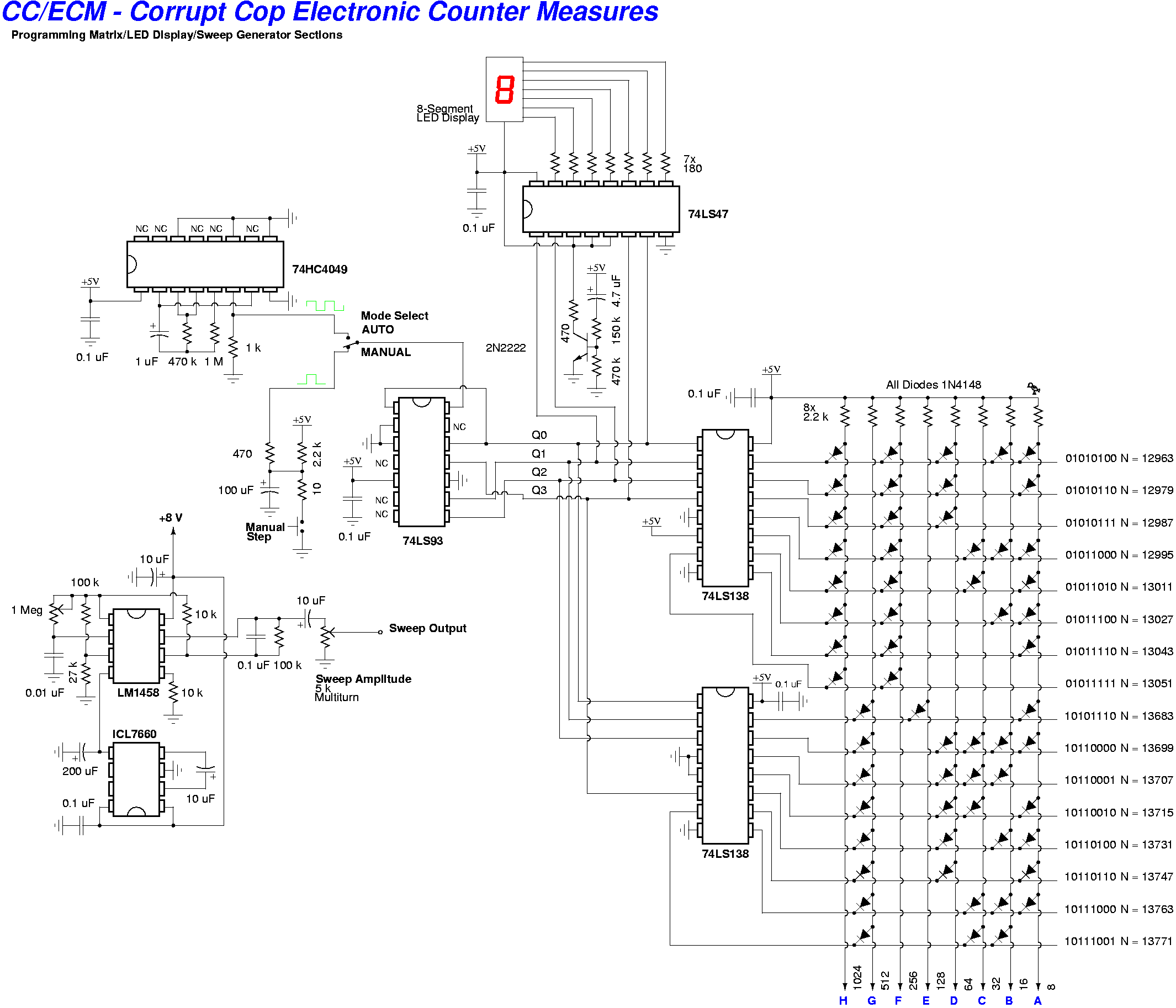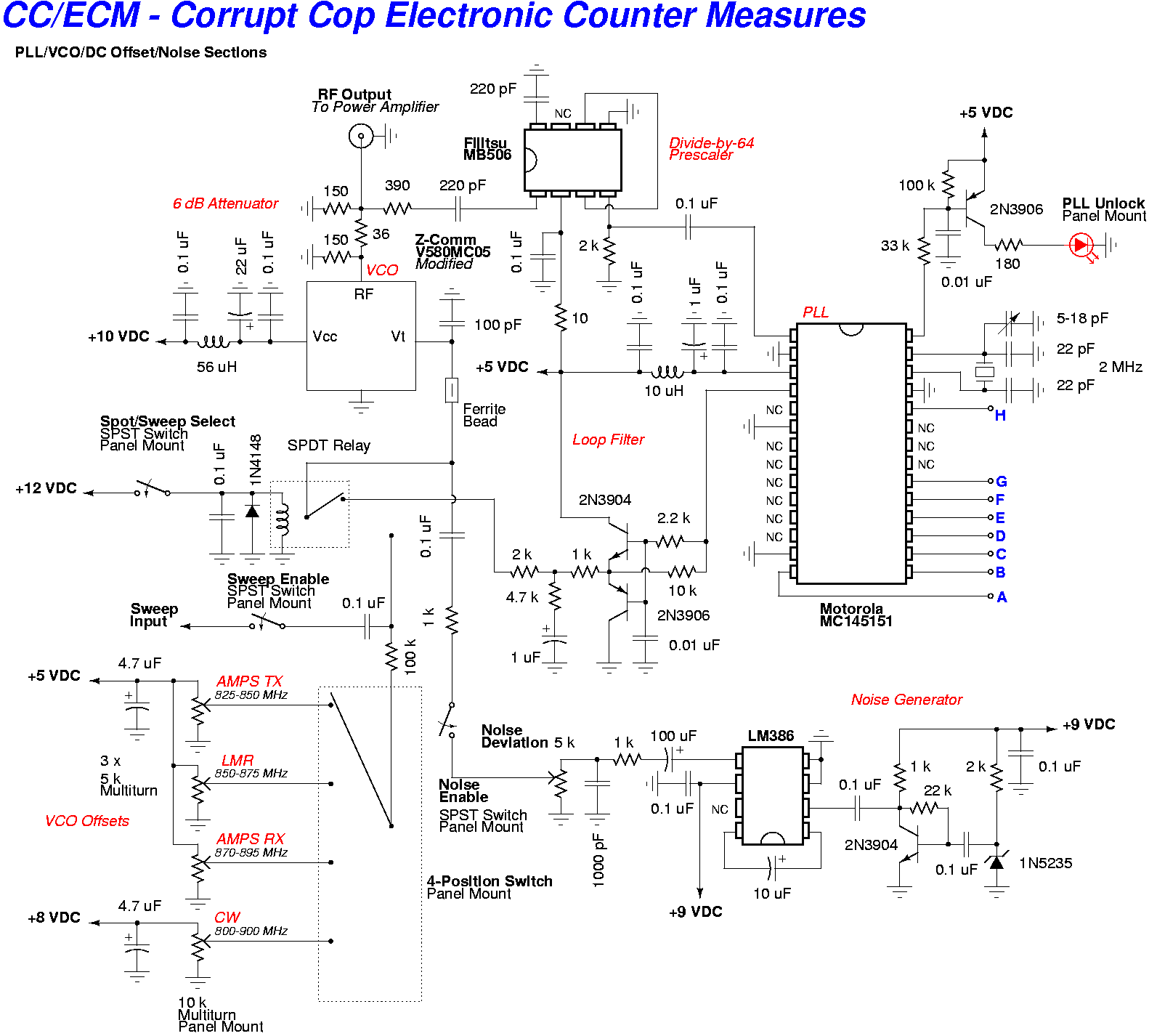Police Radio Jamming as a Means of Information Warfare - HOWTO
With a massive police presence brutalizing peaceful protesters in San Francisco, some people are thinking of creative ways to fight back. My investigation lead me into jamming police radio systems as a means of information warfare. If the police can't hear their orders or communicate back to headquarters, they can't track the masses of people. Thus jamming police radio handsets is an effective means of non-violent resistance.
The following article will provide enough information to build such a system specifically for San Francisco, given enough knowledge, time and energy. It by no means will provide step-by-step instructions to a novice. To understand this and adapt it, you will need some knowledge of electrical engineering, radio, mathematics, and printed circuit board layout. To assemble such a unit, you will need some electronics parts, a high quality printed curcuit board kit, and a suitable antenna (microwave or GPS).
The basic concept behind radio jamming is to overwhelm one signal with a stronger signal on that frequency. San Francisco uses digital FM signals on many frequencies at once. Thus all of the frequencies need to be jammed. Jamming an FM transmission is fairly simple: All you need to do is produce a sine wave on that frequency of a higher amplitude than the signal you want to jam. That should foil most radio receivers.
The City of San Francisco's police system operates on the 800 to 900 Mhz range, in the microwave spectrum. However, each frequency needs to be locked onto in a range possibly as small as 100 Hz. Because of this, no simple kit made out of home parts will do. It is necessary to build a digital tuner into the device.
The basic concept behind digital tuning is a feedback loop called a phase-locked loop (PLL). This loop contains a voltage controlled oscillator (VCO), which is tuned through a series of steps to a multiple of a reference frequency from a crystal. The output of the oscillator is put through a divide-by-n counter, n being the multiple of the reference frequency (and programmed in, usually in binary through the input to an integrated circuit.) The output of this divide-by-n counter is one pulse for every n pulses of the input. This in turn is fed into a phase comparator, which compares the signal to the reference frequency and then produces an error voltage. The error voltage controls the voltage controlled oscillator, which produces the output signal.
Because of the high frequencies in microwave circuitry, normal leaded components and wires act like active components and interfere with the working of the circuit. This makes high quality printed circuit board components necessary. According to the author's understanding, this apparently means that gold alloy circuitry is necessary.
You can amplify the signal as far as you want, but microwaves will only travel in line-of-sight. Skyscrapers and other geographical impediments will stop the signal. To sweep a wide area, transmitting from somewhere high is a good idea. The City of San Francisco has eight different transmitting stations linked together to cover the entire city.
You will need an antenna of course. A GPS antenna will work well and the purchase of one is fairly inconspicuous. Directional or omnidirectional microwave antennae will work even better, depending on your purposes.
Once you have the whole kit together and you want to use it, you will need to excercise some precautions to avoid getting caught. Keeping it on for only a short time is one way. If you want to keep it on for a much longer time, however, you will have to keep moving. Having multiple moving transmitters operating simultaneously will make it even harder to be tracked down.
The following is the set of frequencies the San Francisco Police Department operates on (according to http://www.bearcat1.com/fleetca.htm):
System: San Francisco, City & County County: San Francisco Type: II (Digital Smartzone) Use: Police, Fire, Hospital & Court Security operations Frequencies: Site 1: 866.0500 866.2250 866.2500 866.4500 866.5750 866.6500 866.7750 866.8250 866.9625 867.2250 867.2750 867.4375 867.4562 867.6500 867.7000 867.9000 868.0625 868.1125 868.5375 868.7375 868.7875 868.9000 Site 2: 856.2375 857.2375 858.2375 866.8625 867.7250 868.3375
You should note that fire and emergency response operates on the same frequency and think about the ethical dilemmas. Personally, I think that such a jammer can be used ethically, especially for short ranger purposes, because even the Fire Department has been a party to oppression lately, helping to cut through lock-boxes and clear protestors away from intersections. And emergency response does have another set of general frequencies they can use.
I found designs for an 800 Mhz police radio jammer at the following website: http://gbppr.dyndns.org/PROJ/mil/ccecm/
Below are the schematics from this site:


Get Involved
If you'd like to help with maintaining or developing the website, contact us.
Publish
Publish your stories and upcoming events on Indybay.


